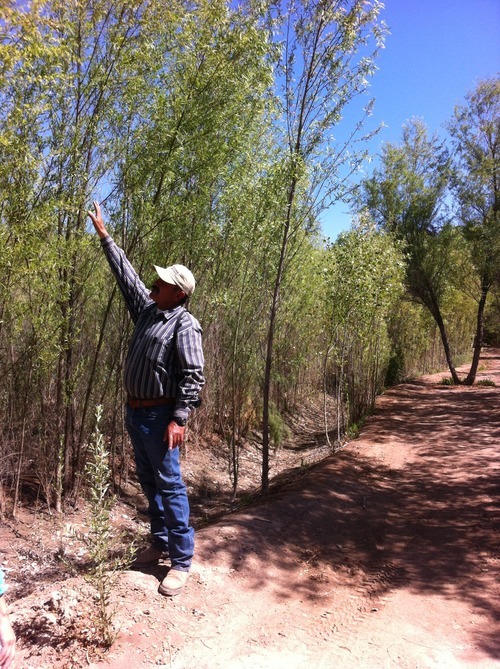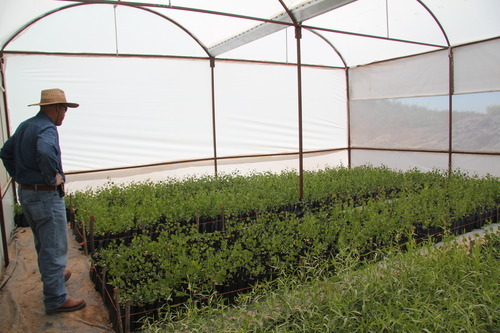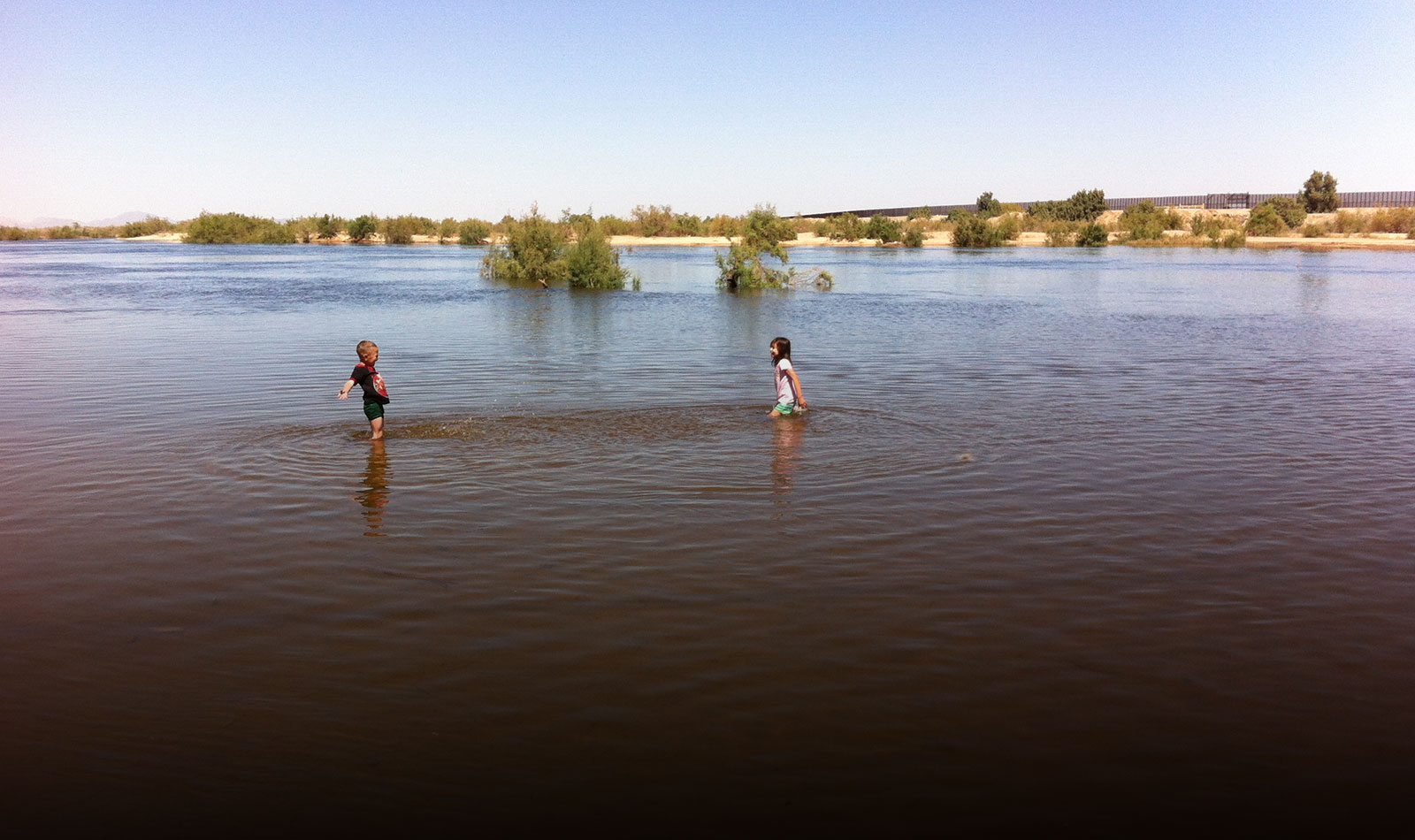This is the third blog in a 5-part series on the Colorado River pulse flow, written by Cesar Angulo, an environmental journalist in Mexico, and commissioned by Environmental Defense Fund. Read Parts 1 and 2.
The pulse flow that has brought water to a thirsty Colorado River Delta will allow the regeneration and restoration of the spacious riparian areas along the banks of the river, where communities and organizations have come together to restore vegetation and wildlife habitat that once existed.
Two of the most important restoration sites are Laguna Grande, located near the end of the agricultural areas of the San Luis and Mexicali valleys, and Miguel Aleman – the limitrophe on the right bank of the river in the North Valley of Mexicali.
Both sites are the product of the union and effort of civil societies, academia and the governments of the United States and Mexico, who have obtained federal land grants and water rights that will allow the creation and regeneration of native forests and species.

Guadalupe Fonseca Molina shows trees that have matured at Laguna Grande
Guadalupe Fonseca Molina is the site coordinator for Laguna Grande, a project lead by Sonoran Institute since 2006 that works to reestablish new poplar and willow forests in the floodplains of the lower Colorado River.
The pulse flow has directly impacted this site, as water entered into Laguna Grande through channels built to connect with the Colorado River. In recent weeks, seeds have been spread in the hope that they will germinate and grow by the river channel as a result of the new flowing water.
 [Dredged channels bring water from the pulse flow to the restoration sites]
[Dredged channels bring water from the pulse flow to the restoration sites]
Fonseca commented that a lot of work as been put into this project to counter the advance of salt cedar (Tamarix aphylla), an invasive tree species that has imposed on the native vegetation and has become a pest throughout the lower basin.
The biologist responsible for the scientific monitoring of the Laguna Grande site, Tomás Rivas, said that poplar and willow forests used to grow naturally in wide areas along the Colorado River Delta, generating a riparian corridor with abundant wildlife. Through restoration, Tomás seeks to help restore some of these areas and connect some green patches of forest along delta.
The Miguel Aleman project, coordinated by Pronatura Noroeste, was born six years ago. It aims to restore woodlands that were destroyed by the lack of water in delta.
Salvador Chavez Alacaráz, restoration project coordinator for Pronatura Noroeste, said that the first years were focused on the production of test trees such as poplars, willows and mesquites.Subsequently, the focus shifted to the creation of nurseries for mass production of these trees.
 [Salvador Chavez Alacaráz oversees tree nurseries at Miguel Aleman]
[Salvador Chavez Alacaráz oversees tree nurseries at Miguel Aleman]
This year, Pronatura Noroeste staff are ready to reforest 35 hectares (90 acres) and ensure good growth with an irrigation system that brings water from a canal intended for agricultural use. In the next three years, the objective is to reforest 90 hectares with mesquite, poplar and willow tress, which used to cover the areas bordering the Colorado River.
“Now, we expect the pulse flow to recharge the aquifer and provide moisture to the subsoil where the trees have been planted,” said Chavez Alacaráz.
He mentioned that Pronatura Noroeste managed to get a grant of 450 acres of federal land surrounding the bed of the Colorado River, in which it intends to implement ecological restoration projects. These projects will have direct benefits to the environment, and thanks to water brought by the pulse flow, the ecosystem will naturally be restored.
Meanwhile, Hector Patiño Garduño, restoration technician for Pronatura Noroeste and resident of Ejido Janitzio, recalls when he came to live in Ejido Janitzio about three decades ago. He remembers the Colorado River regularly bringing water to the area and settlers from Mexicali Valley would fish in the river.
“We have been waiting for the pulse flow for over a year now. We are hoping for positive impacts – the recharge of the aquifer and the restoration of wildlife that used to exist in the river,” he said.
Patiño Garduño thinks that the water in the river will help bring back the balance, since “lately, coyotes have been coming to our houses and trying to hunt our chickens. With the water, they will hopefully have more food to hunt by the river.”
He added that these restoration projects, besides helping families living in the surrounding towns of the Colorado River, will also generate jobs and keep people employed and living in Mexico, rather than moving elsewhere.
“As a community, we don’t want the pulse flow to end. The river is a necessity of the environment and communities,” he concluded.

